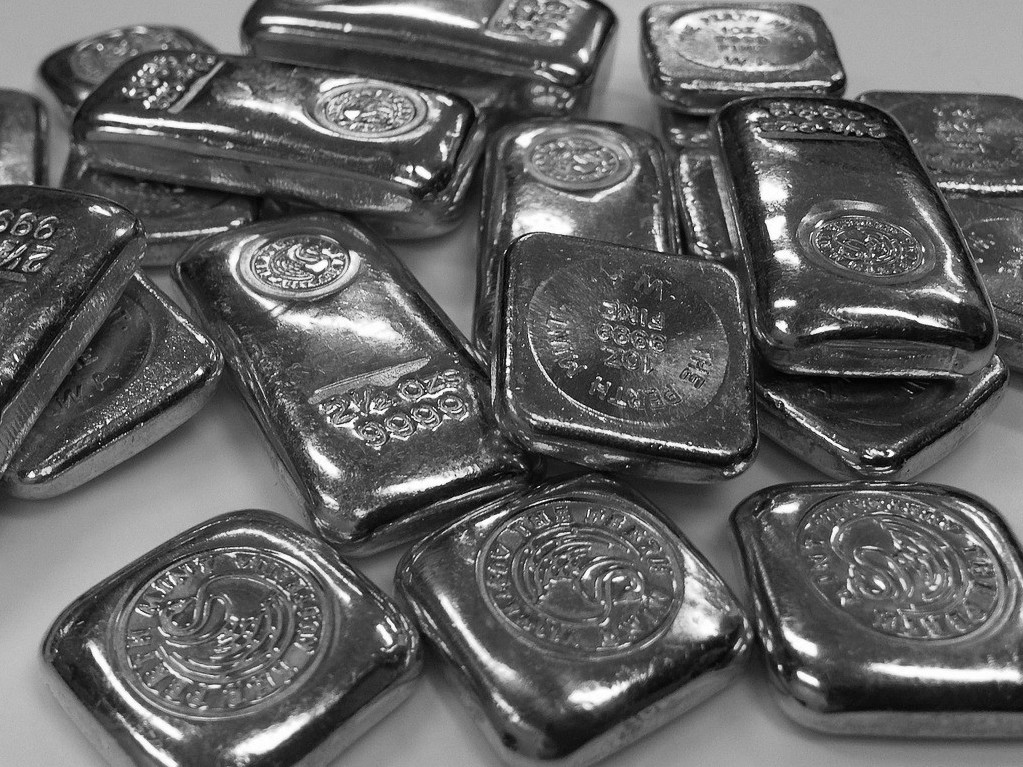From: Platinum Slammed by Supplies, Dollar (WSJ)
By Tatyana Shumsky
A strong dollar is pressing down on platinum.
The precious metal, whose uses range from car-exhaust filters to jewelry, tumbled to a six-year low on Monday, weighed down by a surge in supplies that stems in part from the South African currency’s sharp depreciation against the U.S. dollar.
Last year, a mineworkers’ strike crippled output in South Africa, the world’s biggest platinum producer. The speed of the industry’s recovery, stoked by the South African rand falling to a 14-year low against the dollar in early June, has taken investors and analysts aback.
Some investors are betting that prices in the $4 billion platinum-futures market will continue their slide as supplies flood the market. A weaker rand lowers costs for South Africa’s miners, shielding them from the impact of lower world platinum prices, which are denominated in dollars, and giving them an incentive to keep producing.
Adding to the bearish outlook are worries that an exodus from platinum exchange-traded funds, a relatively new type of security, could add to the glut.
“What is primarily driving the platinum price is the reversal in the supply story and the added pressure that is coming from a stronger dollar,” said Jonathan Berland, who helps manage $11 billion invested in commodities at Gresham Investment Management LLC. The company is betting on lower platinum prices in portfolios that allow such wagers, he said.
Money managers, such as hedge funds, have pared back net-bullish bets on platinum by 42% since the start of the year to a nearly three-year low, according to the latest data from the U.S. Commodity Futures Trading Commission.The selloff in platinum is the latest example of how shifting central-bank policies are rippling through financial markets. The dollar in recent months has rallied in anticipation of higher interest rates in the U.S., which would boost returns on some dollar-denominated assets. Meanwhile, uncertainty over how monetary tightening by the Federal Reserve would play out across emerging markets has hammered developing-market currencies such as the rand.
Car makers stand to benefit from lower platinum prices. The metal is a key component of catalytic converters, which scrub pollutants emitted by engines. Platinum is also used by jewelers, chemical producers, oil refiners and electronics makers—which also are seeing costs fall.
Platinum for July delivery, the most actively traded contact, fell 2.4% to close at $1,060.60 a troy ounce on Monday on the New York Mercantile Exchange, the lowest level since March 2009 and down 12% for the year.
Platinum supplies from South Africa are likely to climb by nearly 20% this year, the largest year-over-year gain since 1993, according to estimates by Johnson Matthey PLC, one of the biggest makers of platinum-based chemicals.
Anglo American Platinum Ltd., the world’s top platinum-producing company, said its output rose 50% in this year’s first quarter, while No. 2 Impala Platinum Holdings Ltd. reported a 47% increase during the same period. Both companies are working on expansion projects and have said the stronger dollar is helping keep costs low, offsetting falling platinum prices, at a time when production is coming back on line.
“In addition to the post-strike recovery, you have just about every producer increasing supply and building new mines,” said Daniel Sacks, who helps manage 433.9 million rand ($35.7 million) invested in resources for Investec Commodity Fund in Cape Town, South Africa. Mr. Sacks holds fewer platinum-mining shares than suggested by indexes. “Supply just continues to grow from here, which isn’t actually great for the market,” he said.
Investors’ sales of shares of physically backed platinum ETFs are adding to global supplies and bearing down on prices, analysts and traders say.Since hitting an all-time record on July 24, the amount of platinum held by ETFs has decreased by 9.9% to 2.62 million troy ounces, according to TD Securities. When investors sell shares in ETFs, the funds sell the platinum they have locked up in vaults into the market.
“As that metal comes into the market, it’s kind of a snowball effect that pushes the price down,” said Clive Burstow, who helps manage $622 million invested in commodities at Baring Asset Management. His fund shed its platinum holdings roughly 18 months ago, Mr. Burstow said.
Fund managers also point to slowing growth in China, the world’s top consumer of platinum for jewelry, as another bearish factor. Chinese platinum imports fell 11% in the first four months of the year, from the same period in 2014, according to TD Securities.
Other investors are wagering that platinum will rebound together with European car sales. Much of the world’s platinum goes into diesel-burning vehicles, which dominate European roads. European car registrations, a proxy for sales, rose 6.9% in April to 1.17 million units, the best sales volume for April since 2009, according to the European Automobile Manufacturers’ Association.
Years of sluggish economic growth have subdued Europe’s demand for platinum, but once the European Central Bank’s economic stimulus takes root, it will “translate to auto-demand growth, which has been depressed for a long time,” said George Zivic, who holds bullish platinum wagers as manager of the $325 million Oppenheimer Commodity Strategy Total Return Fund.
But other traders say swelling platinum supplies in response to foreign-exchange shifts will play a bigger role in pushing prices lower than any support from Europe’s auto market.South Africa’s platinum producers have for years chased higher output over profitability, and the weaker rand “makes the job for them even easier,” said Giovanni Staunovo, a commodities analyst with UBS Wealth Management, which oversees $1 trillion in assets.
Mr. Staunovo said he has been telling clients to sell platinum since the middle of 2014. “We still tell our clients, ‘Don’t touch platinum,’” he said.
